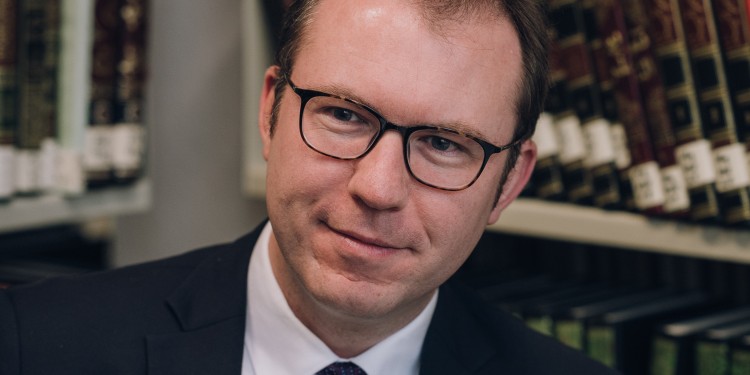
Translations trace the path of knowledge
When historians devote their attention to translations, they are not primarily concerned with the language. Other aspects play a greater role, for example reception history. “We look at which actors were involved,” explains Dr Philip Bockholt, 38, assistant professor at the University of Münster. “Who translated this text, who acquired the manuscript, who read it?” This could be traced, for example, on the basis of ownership notes. “If someone still has a copy of a certain manuscript in his cupboard three centuries after it was produced, that says a lot about the knowledge it contains,” Bockholt is convinced. Since the beginning of the winter semester, Bockholt has been Assistant Professor for the History of the Turkish-Persian World. In addition, he heads the Emmy Noether Junior Research Group “Inner-Islamic Transfer of Knowledge” funded by the German Research Foundation, which is working on Arabic, Persian and Turkish translation processes in the Eastern Mediterranean.
Knowledge can be all kinds of things, says the historian. “This goes far beyond the natural sciences,” he adds. His sources are written in Arabic, Persian or Turkish. Bockholt studied Islamic Studies, History and Theology in Bochum, Münster, Berlin, Jerusalem, Istanbul, Cairo, and Tehran. He completed his doctorate in 2018 at the Freie Universität Berlin on the subject of Islamic world historiography around 1500 based on the Persian chronicle “Habib al-Siyar”. The work, written in the 1520s, is among the most frequently copied historical writings in Islamic intellectual history, with hundreds of manuscripts circulating throughout the Eastern Islamic world. Bockholt examined the readership of the chronicle from the 16th century to the early 20th century not only by means of seals indicating ownership by private individuals or a particular institution, but also on the basis of annotations and illustrations – in other words, the paths these manuscripts took through the hands of a variety of owners and libraries. “The work was part of a geographically widespread canon,” explains Bockholt. It occurred to him that changes must have been made to the content now and then. And an analysis of the manuscripts indeed showed such ideological variations. “The author himself provided a Shiʿi or Sunni orientation for different rulers in his work, depending on their religious preferences.”
Philip Bockholt enriches his new place of work with his expertise on a large cultural area that has not been considered from this angle so far. “The Indian subcontinent or Central Asia, for example, are hardly represented in Islamic Studies – neither here nor at other institutes,” he says. “The different languages used in sources and regions are often located at different institutes,” he adds. The University of Münster was specifically looking for an expert on the regions of the Eastern Islamic world, he says – which is why he moved from the Oriental Institute at the University of Leipzig to Münster. Here in Münster he is now investigating an “enormous area with many exciting phenomena”, he says, including great examples of Islamic architecture such as the Taj Mahal in India or the Great Mosque in Isfahan in Iran.
During his research stays at more than 70 institutions in Europe, the Near and Middle East, Central and South Asia, and North America, Bockholt got to know many different academic cultures. Although it was sometimes difficult, he says, and although he sometimes had to rely on personal contacts to get to the sources, “the subject of my research probably escapes any political attention. Persian historiography of the 16th century, for example, does not seem to interest the state representatives in the region enough to exert influence. That is why I could always work in peace and gain access to libraries and archives.” His next stay abroad will be taking him to Japan for the first time in March. “I have been asked to present my work in Tokyo and Kyoto, where there are some excellent scholars of Islamic studies.” The newly appointed assistant professor also hopes to catch a glimpse of the legendary Japanese cherry blossom during his visit.
He will certainly miss Leipzig – the city of books with its late 19th century flair – says Bockholt, but: “In Münster, I am not only looking forward to a liveable city with plenty of natural and cultural offerings, but also to research networks and interdisciplinary exchange.” He has already held talks with colleagues from the Institute for Ancient Oriental Studies and Near Eastern Archaeology, and there are other disciplines and institutes which he would like to approach. He already knows the city of Münster and its university well, having studied here for a year in 2009. Back then, he lived in Gievenbeck and enjoyed going to the university’s sports facilities. He is most interested in ballroom and Latin American dancing. If possible, he would like to take dance classes again.
Author: Brigitte Heeke
This article was first published in the University newspaper “wissen|leben” No. 7, 16 November 2022
